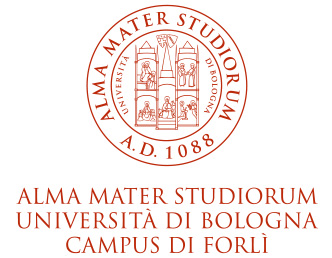Candidates may choose a subject area or learning activity among those included in their study plan (120 ECTS). Students enrolled in a second cycle degree programme willing to choose a learning activity or subject area that is NOT included in their study plan are asked to fill in the relevant form (ATT_1). The student must indicate the motivation of the request and obtain the approval by the degree programme Director, then by the supervisor. The request has to be approved by the Director and the supervisor before starting the thesis to be sure that the chosen subject is consistent with the degree programme Learning outocomes. The form must be submitted to the Student Administration Office of Forlì (P.le della Vittoria 15, Forlì) before filling in the graduation application form online. Candidates may choose as a thesis supervisor any professor pertaining to the subject group specified in the relevant Degree programme teaching regulation (art. 18, paragraph 6 of the University teaching regulations).
Final papers shall be written according to the formal standards reported below. Consequently, theses drawn up in a different way will not be accepted:
The supervising professor will monitor and support the student's activities and ensure the dissertation is appropriate, consistent and original, also by using computer applications.
NOTE: no paper copy of the thesis is required.
Citations, bibliographical references, footnotes and use of brackets
The discussion takes place in presence, with the exception of the following cases:
- students prevented from mobility due to force majeure;
- studentts abroad and enrolled in a course that grants dual or joint degrees;
- students in detention.
Graduating students should bring their laptops and log in at the TEAMS virtual degree room.
They will share the screen and scroll through the presentation which will be projected on the classroom screen and can be followed by the committee and guests online (watch your battery charge).
The average grade calculation will be carried out by the Student Administration Office, as the office in charge of drafting the graduation record. ‘Cum laude’ honours (lode) do not have a numerical value but they will be evaluated and awarded separately by the Examination Board during the dissertation discussion.
This initial score will not be rounded by the Student Administration Office (e.g. 101,56). The final score will be rounded exclusively by the Examination Board during the thesis defence.
FINAL MARK CALCULATION CRITERIA VALID for students graduating from JULY 2018 GRADUATING SESSION (included) ON:
The Board receives a document by the Student Administration Office, called "statino di laurea" (exam record), which indicates the mere weighted average of grades obtained.
The weighted average is converted to a scale with grades up to 110.
Extra points will be added to the initial score as it follows:
NOTE: In order to obtain the mobility programmes extra points, students must submit their formal request to didatticaforli.em.info@unibo.it (by the third deadline) by filling in the form available in the attachment section (ATT_2).
The Board expresses its assessment with a grade out of 110. The exam is deemed to be passed with a minimum grade of 66/110. In the case of a maximum grade (110/110), the Board may also grant a distinction (Cum laude/ con lode) by unanimous decision.
If a candidate does not obtain a score of 106/110 or higher (including all the above-listed extra points), the supervisor may ask for a counter-report (necessary for obtaining a ‘cum laude’ final score) by submitting the request to the Degree programme Board around a month before the dissertation discussion.
NOTE: In the absence of the co-examiner, the Examination Board can only award up to 5 points during the defense. If the co-examiner is present, the Examination Board can award up to 7 points to the final score.
The total amount of points (including the points awarded for th final dissertation and the extra points) cannot exceed 10 points.
ATT. n. 1 - Thesis subject request
[ .doc 40Kb ]
ATT. n. 2 - Credits award form
[ .pdf 186Kb ]
[ .doc 71Kb ]
How to write your Master thesis
[ .pdf 678Kb ]
What is an MS dissertation? Timing, alternatives, obstacles, assessment process
[ .pdf 380Kb ]
